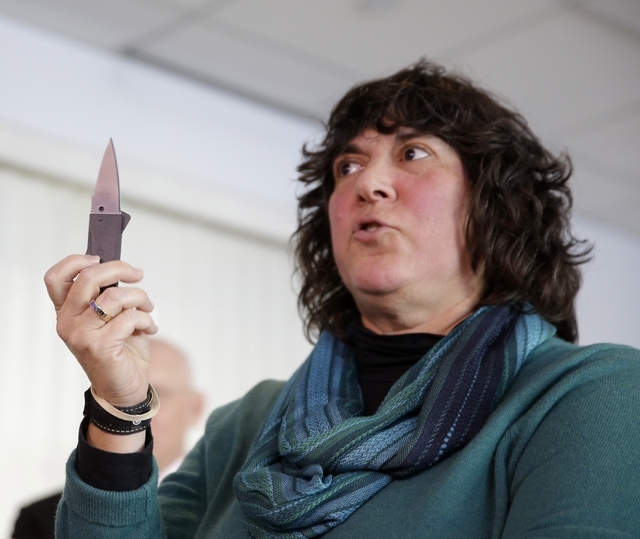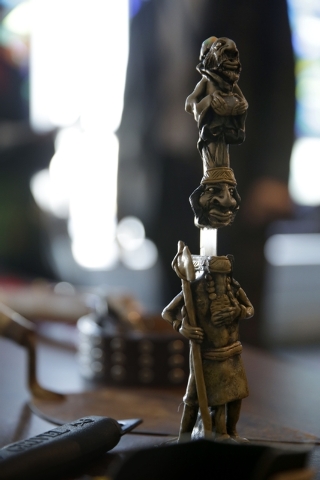What’s OK (and not OK) to carry on a plane
NEW YORK — The Transportation Security Administration on Tuesday displayed thousands of items confiscated from carry-on bags over three months at Kennedy Airport. As the chaotic holiday travel season approaches, the agency wanted to remind the public what carry-on items are no-nos.
The takeaway: Knitting needles and ice skates are welcome on board planes, but not sparklers, nunchucks or fake chain saws.
Four tons of prohibited items are collected every year at John F. Kennedy International Airport alone.
Toy weapons of any kind, including grenades, are out. So are real knives, handcuffs and bullets.
Some items can go into checked bags, but not carry-ons. The details are on an app and the TSA’s website.
“Say you’ve got a knife; this is something that you like to carry with you, as this person did,” TSA spokeswoman Lisa Farbstein said, holding up the aforementioned knife at a press conference. “We are going to spot that in the X-ray machine or it’s going to set off one of the detectors, the body scanners, and you are going to be given a choice: You can either put that in your checked baggage, you can go back and put it in your car, throw it in your trunk, put it in your glove compartment, put it under your seat.”
Some airports also have mailing centers so you can send the item to your destination or your home. Otherwise, you can hand it off to the person who’s dropping you off at the airport, or you can surrender it.
States get to take the surrendered items. New York and New Jersey “don’t want to deal with that,” Farbstein said, but Pennsylvania takes the items and sells them.





















